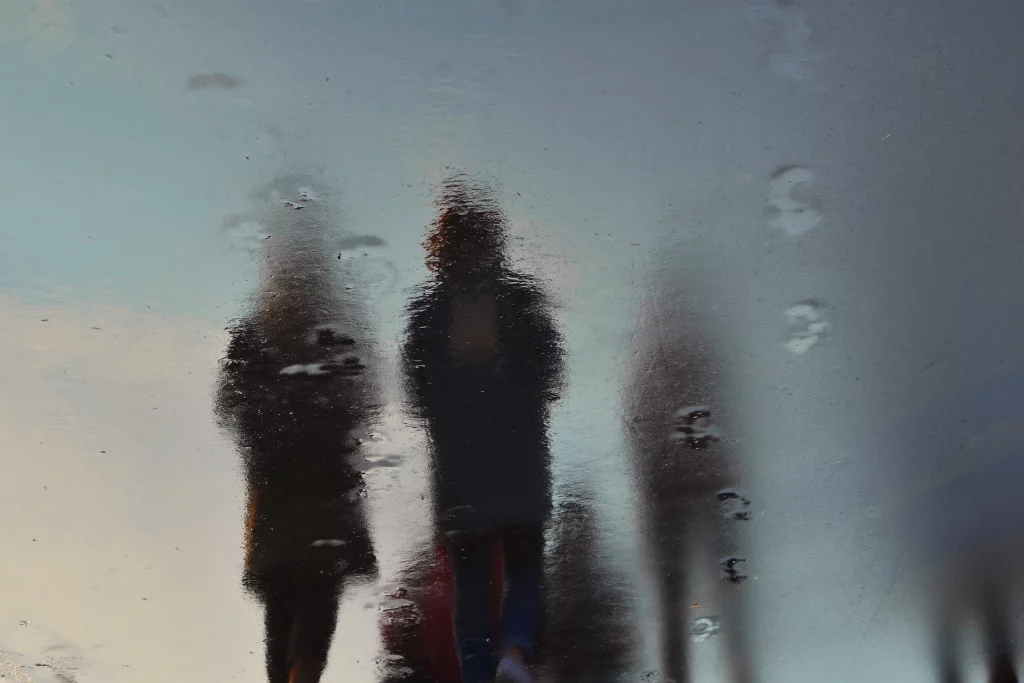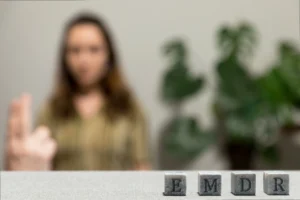Understanding the Different Types and Signs of Use
Heroin is a highly addictive and dangerous opioid drug that comes in various forms and types. Knowing what heroin looks like can help you identify if someone you care about may be using this substance.
In this article, we’ll explore the different types of heroin, their appearance, the paraphernalia associated with each type, and the signs of heroin use. By understanding these aspects, you can better support your loved ones and encourage them to seek help.
Signs of Heroin Use: What to Look For
Track marks are scars or puncture wounds along the veins, typically caused by repeated intravenous heroin use. They are a visible sign of long-term heroin abuse.
Constricted or “pinpoint” pupils are a common physical sign of heroin use. Heroin causes the pupils to constrict, resulting in a microscopic appearance, even in dim lighting.
Burnt spoons with dark residue are often associated with intravenous heroin use. Users heat the heroin solution in the spoon before drawing it into a syringe for injection.
Foil wrappers or sheets with burn marks and dark residue are indicative of smoking heroin. Users place the heroin on the foil, heat it from below, and inhale the vapors through a straw or tube.
Watch this informative video interview on heroin addiction.
The Different Types of Heroin
Heroin has three main forms: white powder, brown powder, and black tar. Each type has distinct characteristics and methods of use. Let’s examine each one in more detail.
White Powder Heroin
White powder heroin, often referred to as “China White,” is one of the most common forms of the drug. It is usually cut with other substances like sugar, starch, or powdered milk to increase its volume and potency. The purity of white powder heroin can vary greatly, making it difficult for users to gauge the strength of the drug, which can lead to accidental overdoses.
Brown Powder Heroin
Brown powder heroin is similar to white heroin but has typically been cut with a higher proportion of other substances, resulting in its darker color. The additional substances used to cut brown powder heroin may include cocoa powder, instant coffee, or other cheaper, more readily available drugs. The lower purity of brown powder heroin can lead to more severe health risks for users.
What Does Powder Heroin Look Like?

Powder heroin, whether white or brown, has a fine, powdery consistency resembling flour or confectioner’s sugar. It can also appear slightly granular, depending on the cutting agents used. The color can range from a bright white to a pale beige or even a light brown.
Black Tar Heroin
Black tar heroin is a dark, sticky substance that gets its name from its tar-like appearance and consistency. This type of heroin is typically less pure than powder heroin and contains a higher concentration of impurities resulting from the crude processing methods used to manufacture it.
What Does Black Tar Heroin Look Like?
Black tar heroin is a dark, sticky substance that can range in color from dark brown to black. It may appear shiny or dull, depending on how it was processed and the presence of additives. The texture of black tar heroin can vary from a hard, rock-like consistency to a pliable, gummy substance.

What Does Black Tar Heroin Smell Like?
Quick Tip
Properly Dispose of Used Heroin Paraphernalia
If you come across used heroin paraphernalia, such as needles or syringes, it’s essential to dispose of them safely to prevent accidental injury or the spread of infectious diseases.
Store used needles in a sharps container or a sturdy, puncture-proof container (like a laundry detergent bottle) until you can dispose of them properly.
Many communities offer safe disposal programs or have designated drop-off locations for used sharps. Always handle used paraphernalia with caution, wear gloves if possible, and never attempt to recap or break needles before disposing of them.
How Is Each Type of Heroin Used?
The method of heroin use varies depending on the type of heroin and the user’s preference.
Some common methods include:
Powder Heroin (White or Brown)
- Snorting: Users may snort powder heroin through the nose using a straw, rolled-up paper, or a small tube.
- Injecting: Powder heroin can be dissolved in water and injected into the bloodstream using a needle and syringe.
- Smoking: Although less common, some users may smoke powder heroin by heating it on foil and inhaling the vapors through a straw.
Black Tar Heroin
- Injecting: Black tar heroin is most commonly dissolved in water and injected into the bloodstream.
- Smoking: Users may place a small amount of black tar heroin on foil, heat it from beneath, and inhale the vapors through a straw.
- Snorting: Black tar heroin can be ground into a powder and snorted, though this method is less common due to the drug’s sticky consistency.
What are the most common ways heroin is used, and how can I tell if someone is using heroin?
Heroin can be used in several ways, depending on the type of heroin and the user’s preference. White or brown powder heroin is commonly snorted, injected, or smoked, while black tar heroin is usually injected or smoked. Signs of heroin use include the presence of paraphernalia such as needles, syringes, burnt spoons, foil, and straws, as well as physical symptoms like constricted pupils, drowsiness, slurred speech, and impaired coordination. Behavioral changes, such as secrecy, withdrawing from family and friends, and neglecting responsibilities, can also indicate heroin use.
How can I approach a loved one who I suspect is using heroin, and what should I do to help them?
If you suspect a loved one is using heroin, approach them with compassion, understanding, and a non-judgmental attitude. Express your concerns and offer your support in seeking professional help. Research treatment options, such as accredited addiction treatment centers that specialize in treating heroin addiction. Encourage your loved one to undergo a clinical assessment with a qualified addiction specialist to determine the appropriate level of care. If they are resistant to seeking help, consider enlisting the assistance of a professional interventionist. Continue offering your love, support, and encouragement throughout their recovery journey.
What are the risks associated with heroin use, and why is seeking treatment so important?
Heroin use poses significant risks to an individual’s physical and mental health, as well as their overall well-being. Chronic heroin use can lead to long-term health complications such as respiratory problems, cardiovascular disease, liver and kidney damage, increased risk of infectious diseases, mental health disorders, and cognitive impairment. Moreover, the risk of fatal overdose is high with heroin use. Seeking professional treatment is crucial to address the physical, psychological, and social aspects of heroin addiction. Treatment typically includes medical detoxification, medication-assisted treatment, behavioral therapies, counseling, and aftercare support to help individuals achieve and maintain long-term recovery.
Paraphernalia Associated with Powder Heroin
Intravenous Use
- Needles and syringes of various sizes
- Tourniquets, rubber tubing, or ties to constrict veins
- Lighters or candles to heat the heroin solution
- Spoons or bottle caps with burnt residue used to cook the heroin
- Cotton balls or cigarette filters used to strain the heroin solution
Snorting Heroin
- Small, cut straws or rolled-up paper tubes
- Razor blades, credit cards, or other flat surfaces used to chop and divide the heroin
- Mirrors, glass, or other smooth surfaces used as a base for snorting
- Hollowed-out pens or small metal/glass tubes called “tooters” or “snuff bullets.”
Smoking Powder Heroin
- Aluminum foil or gum wrappers with burn marks and residue
- Straws, hollow pens, or foil tubes used to inhale the vapors
- Lighters or candles used to heat the heroin
Paraphernalia Associated with Black Tar Heroin
IV Black Tar Heroin Use
- Needles and syringes
- Lighters or candles to heat the heroin
- Spoons or bottle caps with dark, sticky residue
- Tourniquets, rubber tubing, or ties
- Cotton balls or cigarette filters
Smoking Black Tar Heroin
- Aluminum foil or gum wrappers with dark, sticky residue and burn marks
- Straws, hollow pens, or foil tubes used for inhaling the vapors
- Lighters or candles used to heat the heroin
Get Help for Substance Abuse at Cornerstone
We offer a wide range of treatment for mental health and substance abuse conditions. Begin your journey to recovery today!
Signs of Heroin Use
In addition to identifying paraphernalia, it’s essential to recognize the physical and behavioral signs of heroin use. Some common signs include:
General Physical Signs
- Constricted or “pinpoint” pupils
- Slow, shallow, or labored breathing
- Flushed, warm skin
- Excessive sweating and itching
- Nausea, vomiting, and constipation
- Impaired coordination and balance
- Slurred speech and drowsiness
- Nodding off or losing consciousness
Signs of IV Heroin Use
- Track marks, scars, or puncture wounds along veins
- Abscesses, infections, or skin ulcerations at injection sites
- Bruising or discoloration around injection areas
- Collapsed or hardened veins
Behavioral Signs
- Withdrawal from family, friends, and social activities
- Secretive or suspicious behavior
- Sudden financial difficulties or borrowing money
- Neglecting responsibilities at work, school, or home
- Mood swings, irritability, or depression
- Changes in sleep patterns
- Wearing long sleeves or pants, even in warm weather, to conceal injection sites
A Personal Story of Heroin Addiction and Recovery
An anonymous recovering heroin user shares her experience:
“I tried to hide my heroin use from my family by being careful about where I went and who I was with when using. I kept my stash hidden and always disposed of needles and other evidence. I wore long sleeves, even in summer, to conceal my track marks. Despite my efforts, my family noticed significant changes in me, and when they saw direct evidence, they confronted me about it.
One day, I returned home to find my family waiting to talk to me. They told me I needed help and that I was destroying myself. At that moment, I realized I would lose everything and everyone I loved if I didn’t get help. That day, I decided to seek treatment. Looking back, I know my family saved my life, even if I felt like I hated them for making me get help at the time.”
This personal account highlights the importance of family support and intervention in recovery. It also emphasizes the need for understanding and compassion when addressing a loved one’s heroin addiction.
Getting Someone into Heroin Treatment
If you suspect that your loved one is struggling with heroin addiction, the first step is to approach them with empathy and understanding. Express your concerns and offer your support in seeking professional help. Some steps you can take include:
- Research treatment options: Look for accredited addiction treatment centers that offer evidence-based therapies and comprehensive care. Consider factors such as location, cost, and specialization in treating heroin addiction.
- Schedule a professional evaluation: Encourage your loved one to undergo a clinical assessment with a qualified addiction specialist. This evaluation will help determine the severity of the addiction and the most appropriate level of care.
- Consider an intervention: If your loved one is resistant to seeking help, a professional interventionist can help you plan and conduct a structured, compassionate intervention to motivate them to enter treatment.
- Offer ongoing support: Recovery from heroin addiction is a long-term process. Continue to offer your love, encouragement, and practical support throughout their treatment and aftercare journey. Attend family therapy sessions, support groups, or educational workshops to understand better and support their recovery.
The Importance of Seeking Help for Heroin Addiction
Heroin addiction is a severe and life-threatening condition that requires professional treatment. The longer someone uses heroin, the higher the risk of developing long-term health complications, such as:
- Chronic respiratory problems
- Cardiovascular disease
- Liver and kidney disease
- Increased risk of infectious diseases like HIV/AIDS and hepatitis B and C
- Mental health disorders, including depression and anxiety
- Cognitive impairment and memory loss
The risk of fatal overdose is ever-present with heroin use. According to the National Institute on Drug Abuse, heroin-related overdose deaths have increased nearly six-fold from 2002 to 2019 in the United States.
Seeking help for heroin addiction is not only crucial for the individual’s health and well-being but also for the safety and stability of their loved ones and the community at large. Addiction treatment centers offer a range of evidence-based therapies, including:
- Medical detoxification to manage withdrawal symptoms safely
- Medication-assisted treatment (MAT) to reduce cravings and prevent relapse
- Behavioral therapies, such as cognitive-behavioral therapy (CBT) and contingency management
- Individual, group, and family counseling
- Dual diagnosis treatment for co-occurring mental health disorders
- Aftercare planning and support services
Offering Support and Hope for Those Struggling with Heroin Addiction
Recognizing the different types of heroin, the paraphernalia associated with its use, and the physical and behavioral signs of addiction is a crucial first step in helping a loved one who may be struggling with heroin abuse. By understanding what to look for, you can better support your loved one in seeking the help they need to overcome their addiction.
At Cornerstone Healing Center, we understand that recovery from heroin addiction is possible with the right treatment, support, and dedication. Our compassionate staff, many of whom have faced similar challenges in their own lives, are committed to providing the highest quality care and support to help individuals break free from the grip of heroin addiction.
If you or someone you love is battling heroin addiction, know that you are not alone. Reach out to Cornerstone Healing Center today to discuss your options and take the first step towards a healthier, more fulfilling life in recovery. Our team is here to guide you every step of the way, offering the understanding, expertise, and unwavering support you need to achieve lasting sobriety.
Key Takeaways
- Key Takeaways
- Heroin comes in three main forms: white powder, brown powder, and black tar, each with distinct characteristics and methods of use.
- Common signs of heroin use include the presence of paraphernalia, such as needles, burnt spoons, and foil, as well as physical symptoms like pinpoint pupils and slurred speech.
- Approaching a loved one who is struggling with heroin addiction should be done with compassion, understanding, and support while encouraging them to seek professional help.
- Seeking treatment for heroin addiction is crucial to address the physical, psychological, and social aspects of the disease and to prevent long-term health complications and the risk of fatal overdose.





